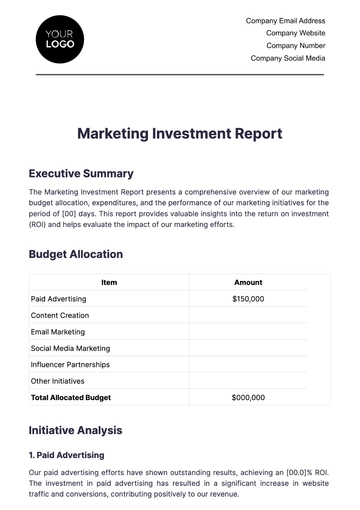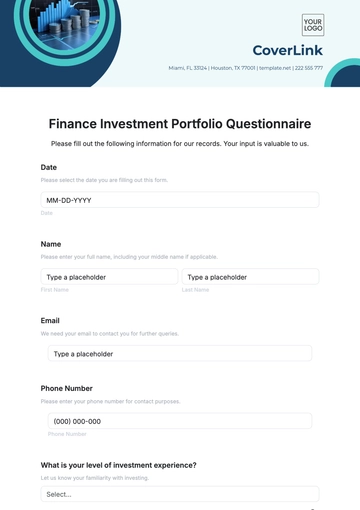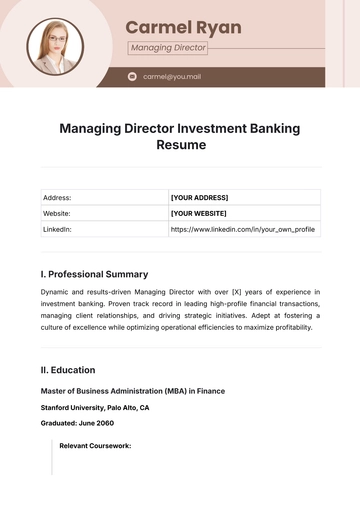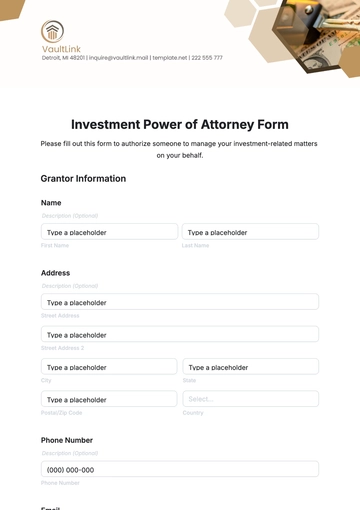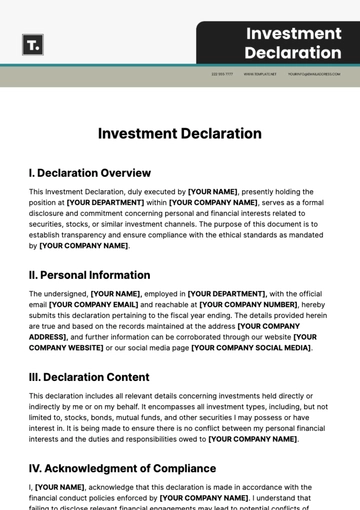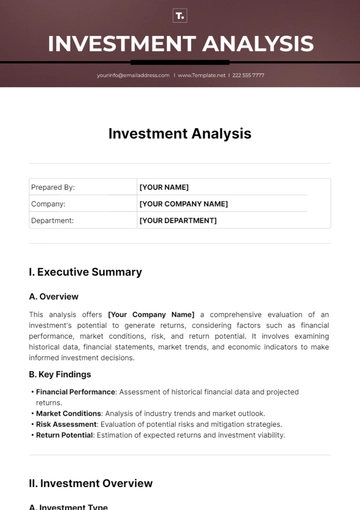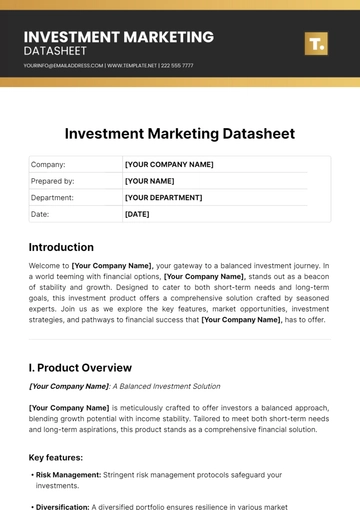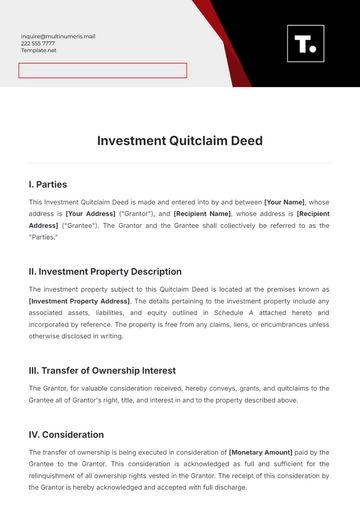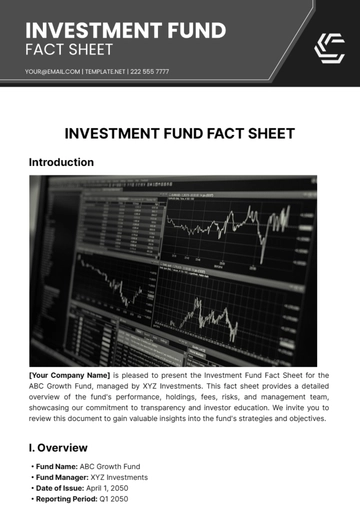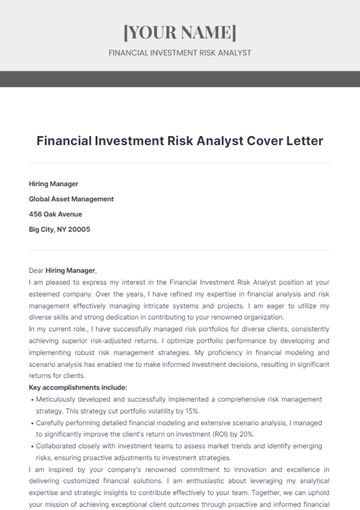Free Financial Investment Audit Review
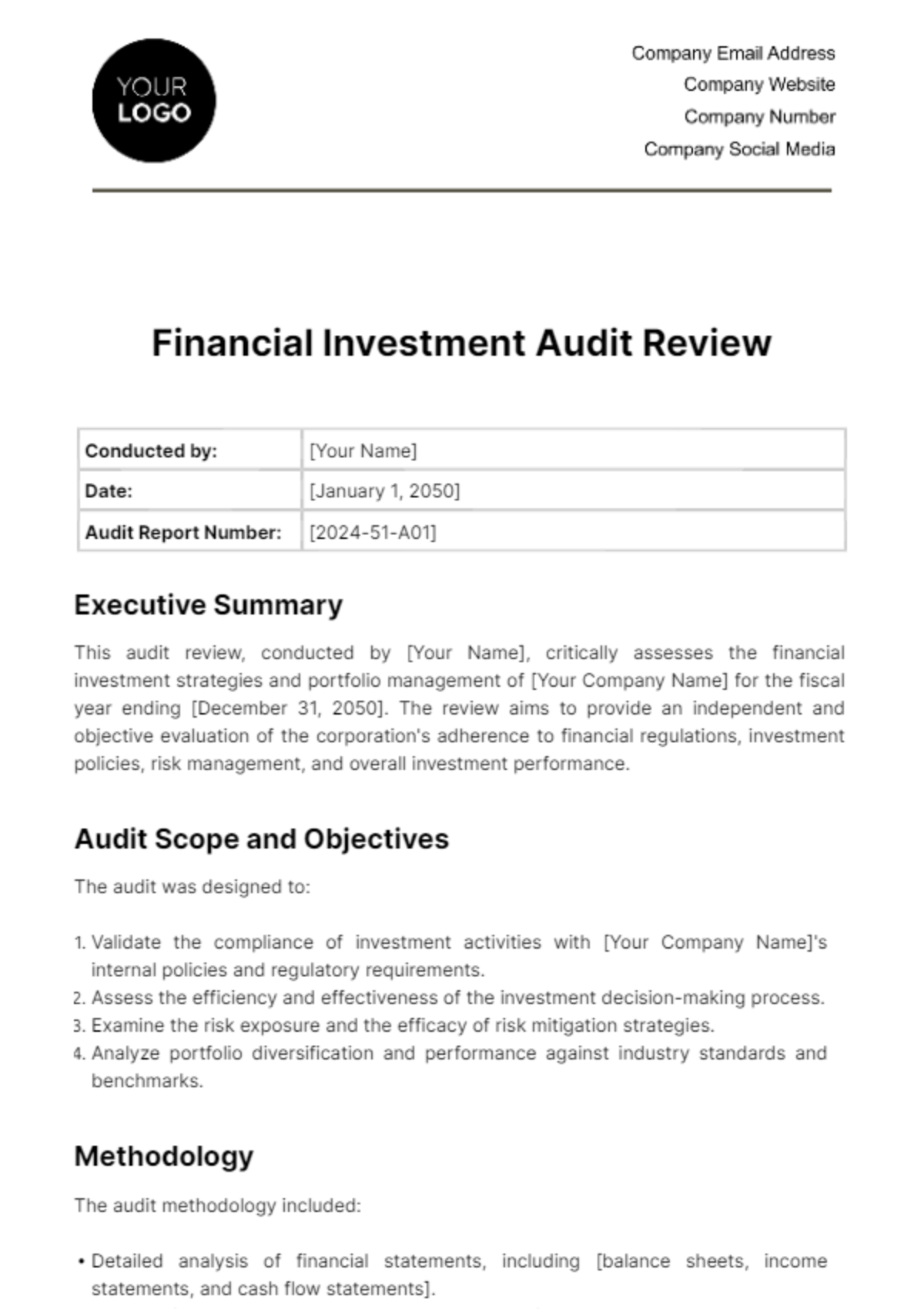
Conducted by: | [Your Name] |
Date: | [January 1, 2050] |
Audit Report Number: | [2024-51-A01] |
Executive Summary
This audit review, conducted by [Your Name], critically assesses the financial investment strategies and portfolio management of [Your Company Name] for the fiscal year ending [December 31, 2050]. The review aims to provide an independent and objective evaluation of the corporation's adherence to financial regulations, investment policies, risk management, and overall investment performance.
Audit Scope and Objectives
The audit was designed to:
Validate the compliance of investment activities with [Your Company Name]'s internal policies and regulatory requirements.
Assess the efficiency and effectiveness of the investment decision-making process.
Examine the risk exposure and the efficacy of risk mitigation strategies.
Analyze portfolio diversification and performance against industry standards and benchmarks.
Methodology
The audit methodology included:
Detailed analysis of financial statements, including [balance sheets, income statements, and cash flow statements].
Review of investment transaction records and portfolio management strategies.
Interviews with key personnel, including [Chief Financial Officer, Portfolio Managers, and Risk Management Officers].
Comparative analysis with industry standards and peer organizations.
Key Audit Findings
1. Policy Compliance
Findings: Compliance with internal and regulatory standards was found to be at a high level, with a compliance rate of [95%]. However, specific areas of non-compliance were identified, which require immediate attention.
Area of Non-Compliance | Details | Suggested Action |
Foreign Investments | Investments in [Country X] did not fully comply with [Your Company Name]'s risk assessment policies. | Review and realign foreign investments with internal policies. |
Derivatives Trading | Derivative strategies employed were occasionally misaligned with the corporation’s risk tolerance levels. | Implement tighter controls and oversight for derivative trading activities. |
2. Investment Decision-making
Findings: The overall decision-making process was found to be effective but lacked the utilization of advanced technologies and data analytics, which are becoming increasingly vital in financial decision-making.
Recommendation: Incorporate advanced data analytics and AI-driven tools to enhance predictive insights and investment strategies.
3. Risk Management
Findings: The audit revealed a robust risk management framework. However, specific vulnerabilities, particularly in cybersecurity risk management, were observed.
Risk Type | Assessment | Recommendation |
Market Risk | Well-managed with effective hedging strategies. | Continue current practices. |
Credit Risk | Adequate assessment and mitigation measures in place. | Maintain vigilance and periodic reassessments. |
CybersecurityRisk | Identified as a potential vulnerability, especially in online trading platforms. | Strengthen cybersecurity measures and regular security audits. |
4. Portfolio Diversification and Performance
Findings: The portfolio shows a reasonable level of diversification across various asset classes. However, an over-concentration in technology stocks was noted. The portfolio's overall performance was [X% return], which is [above/below] the industry average.
Asset Class | Allocation | Performance | Recommendation |
Technology Stocks | [45%] | High returns but increased risk exposure. | Reduce allocation to [35%] and diversify into other sectors. |
Green Energy | [15%] | Below expected performance. | Investigate underperformance and potential growth opportunities. |
Healthcare | [10%] | Stable and consistent returns. | Increase allocation to [20%] to balance portfolio risk. |
Recommendations
To enhance financial investment performance and risk management, we recommend:
Addressing non-compliance issues in [foreign investments and derivatives trading].
Incorporating [advanced data analytics] into the investment decision-making process.
Strengthening [cybersecurity risk management] practices.
Rebalancing the portfolio to reduce over-concentration in [technology stocks] and explore opportunities in [green energy and healthcare sectors].
Conclusion
[Your Company Name] exhibits a strong foundation in financial investment and portfolio management. By implementing the above recommendations, the corporation can enhance its investment performance, ensure compliance, and mitigate potential risks more effectively.
Auditor's Signature
[Your Name]
[Your Company Name]
- 100% Customizable, free editor
- Access 1 Million+ Templates, photo’s & graphics
- Download or share as a template
- Click and replace photos, graphics, text, backgrounds
- Resize, crop, AI write & more
- Access advanced editor
Ensure investment compliance and accuracy with the Financial Investment Audit Review Template from Template.net. Editable and customizable, this template is designed for thorough auditing of financial investments. It's indispensable for auditors and financial managers, offering a structured approach to reviewing investment records, verifying accuracy, and identifying areas for improvement.



